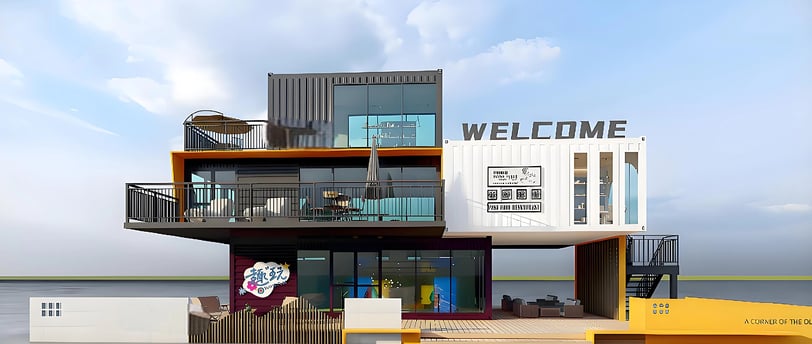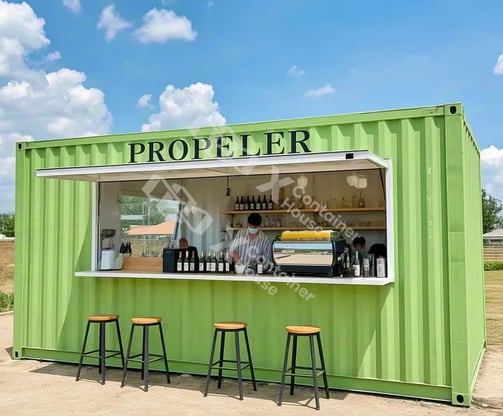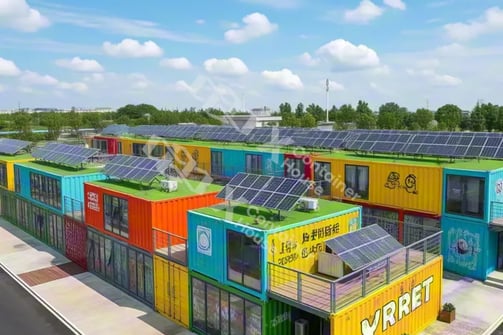Exploring the Cost and Efficiency of Container Houses Compared to Traditional Builds
Shipping containers as homes: trendy gimmick or game-changer? This post weighs their cost-efficiency, speed, and eco-appeal against traditional construction’s flexibility and regulatory challenges. Perfect for budget-conscious builders or sustainability seekers—discover if modular steel boxes are the future of smart living or a niche solution with limits.
CREATIVE CONTAINER HOUSE
3/24/20253 min read


In an era where construction costs are soaring and sustainability is paramount, Creative Container Houses (also referred to as Space Capsule Houses or Flat Pack Houses) are gaining traction as a budget-friendly, eco-conscious alternative to conventional builds. But do these modular marvels truly deliver on their promise of affordability and efficiency? Let’s crunch the numbers and explore their economic viability across diverse scenarios.
Breaking Down the Costs: Traditional vs. Container Construction
Building a home traditionally involves a labyrinth of expenses: raw materials, labor, permits, and unforeseen delays. Creative Container Houses, however, streamline this process by repurposing shipping containers—a cost-effective foundation that slashes material waste and construction time.
Material Costs: Traditional builds require bricks, cement, and timber, often sourced globally. In contrast, a Space Capsule House leverages existing steel containers, reducing material expenses by up to 50% in some cases.
Transport & Installation: Shipping containers are designed for global transit, making them easier (and cheaper) to move than bulky construction materials. A Flat Pack House, which arrives as pre-cut kits, further minimizes transport costs by compacting components into smaller shipments.
Labor Efficiency: Assembling a Creative Container House can take weeks, not months. Fewer workers, shorter timelines, and modular designs (where sections are prefabricated off-site) translate to significant labor savings.
For example, a 2023 study by Modular Architecture Review found that container homes in urban areas cut construction costs by 30–40% compared to traditional builds. Could this model be the key to affordable housing in high-demand regions?
Economic Feasibility: Tailoring Solutions to Context
The cost-effectiveness of Creative Container Houses isn’t one-size-fits-all. Factors like location, purpose, and local regulations play a critical role:
Urban vs. Rural Settings: In cities, where land and labor are expensive, container homes shine. A Space Capsule House in Tokyo or New York might cost 20–30% less than a conventional apartment, thanks to reduced material and labor costs. Rural areas, however, may favor Flat Pack Houses for their DIY-friendly kits and lower transport costs.
Residential vs. Commercial Use: Container homes aren’t just for living. A Creative Container House repurposed as a pop-up café or office space can yield faster returns on investment. For instance, a San Francisco startup saved $80,000 by converting containers into a co-working hub instead of leasing traditional office space.
Regulatory Hurdles: Some regions impose zoning restrictions on modular builds. Yet, cities like Vancouver and Berlin are rewriting rules to incentivize sustainable housing. Early adopters in these markets often benefit from tax breaks or grants, further tipping the scales in favor of containers.
The Hidden Perks: Beyond the Price Tag
While upfront costs are compelling, Creative Container Houses offer long-term savings too:
Energy Efficiency: Many models integrate solar panels, insulation, and smart tech, reducing utility bills. A Flat Pack House in Australia reported a 40% drop in energy costs after adding solar roofing.
Scalability: Need more space? Stack or link containers. This flexibility lowers the cost of future expansions compared to traditional renovations.
Resale Value: Eco-friendly homes are increasingly sought after. A 2024 Zillow report noted that modular homes with green certifications sell 15% faster than conventional ones.
Challenges and Mitigation Strategies
Critics argue that container homes feel “industrial” or lack customization. However, modern designs blend sleek aesthetics with functionality. For example, a Space Capsule House in Iceland features floor-to-ceiling glass walls and reclaimed wood interiors, proving containers can be luxurious.
To address concerns:
Hybrid Models: Combine containers with traditional framing for larger homes.
Local Partnerships: Work with architects familiar with modular builds to navigate regulations.
Financing Innovations: Some banks now offer specialized loans for sustainable construction, easing cash flow.
Conclusion: The Bottom Line for Budget-Conscious Builders
Can Creative Container Houses outperform traditional builds in cost and efficiency? The evidence suggests yes—but success hinges on context. For urbanites, eco-warriors, or businesses seeking agility, these modular homes offer a winning blend of affordability, speed, and sustainability.
Ready to explore how Creative Container Houses (or their cousins, Flat Pack Houses and Space Capsule Houses) can fit your budget and vision? Check out our catalog to see the possibilities in action.


Whether you’re a homeowner, entrepreneur, or developer, the future of cost-effective building is here—and it’s built to last.


About
OUR POLICY
Contact
Tel:+86 536 628 1777
Fax:+86 536 628 1777
E_mail:
info@xcontainerhouse.com
XContainerHouse







© 2025. All rights reserved.
